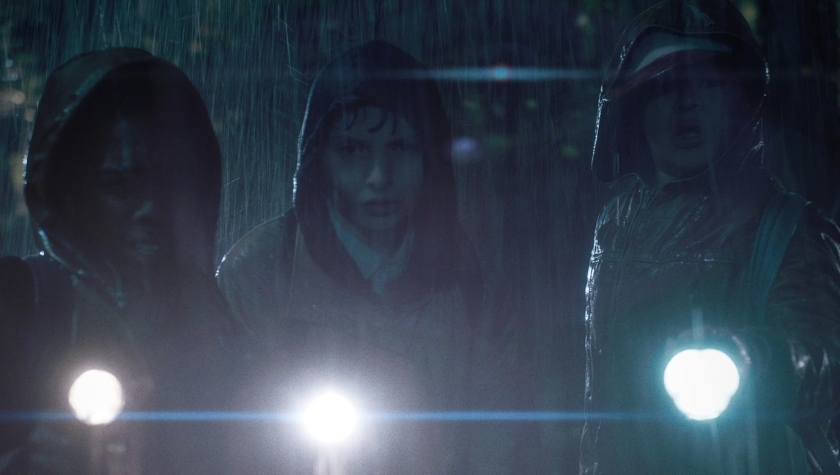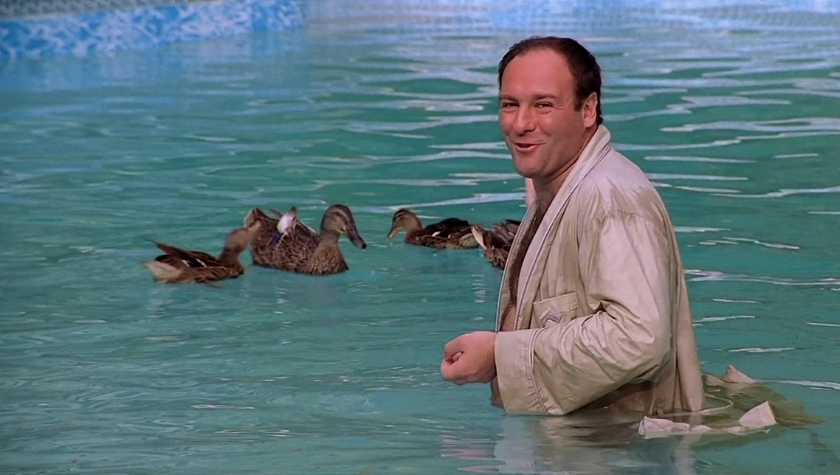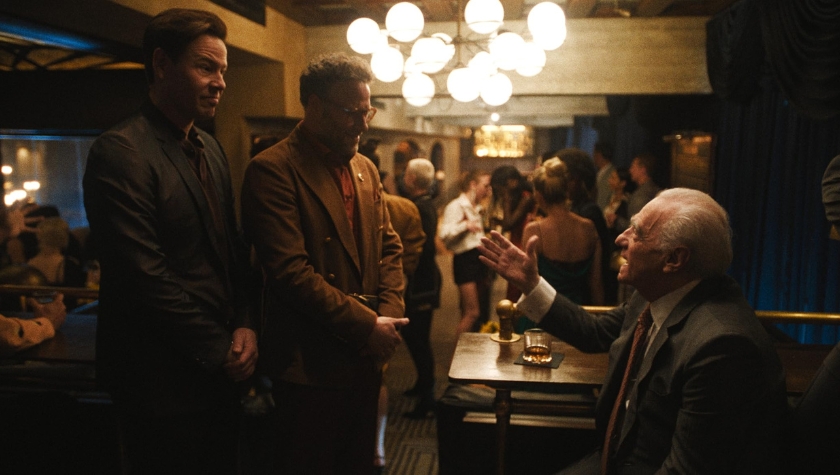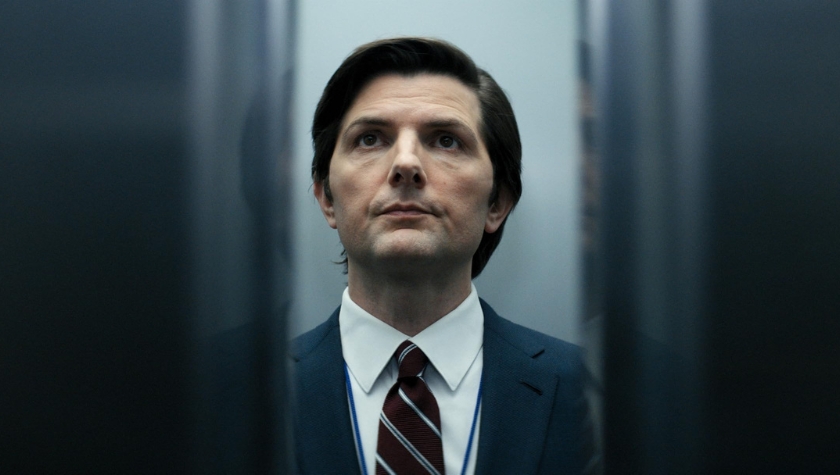The television and streaming landscapes have never been more exciting - or more competitive. With hundreds of TV networks and streaming platforms worldwide producing content, thousands of series pilots are written each year, and only a small percentage of those stand out the most and get a full series launch.
Needless to say, it’s a competitive market. However, because there is such a high demand for content to fill network time slots and pack streaming channels with seemingly endless options for subscribers, episodic storytelling is in an all-time demand.
What separates a series pilot that feels truly ready and desirable from those that aren’t? Here we offer five essential elements your TV pilot needs to stand out.
1. A Compelling World
Every great series transports us into a world we can’t wait to revisit with each episode, whether that world is grounded in reality (The Sopranos), surreal (Severance), or both (Stranger Things). You also have the added option of elevated or satirical reality, where audiences are compelled by extreme hilarity and satire of realistic worlds like Hollywood (The Studio), working at the DMV (DMV), hanging out with your friends (Friends), or working in an office setting (The Office).
Each of these settings (the world) defines the show’s tone, atmosphere, and story/character potential. And the worlds they present are what entice an audience to click, record, or tune in.
- Stranger Things introduces an intriguing world where growing up in the 1980s meets the fantasy of Dungeons & Dragons lore, horror, and science fiction.
- The Sopranos gives us a deeper look into mob life and how the characters balance the violent and criminal aspects of that world with the relatable setting of family dynamics.
- Severance offers an original and thought-provoking near-future world where people can separate themselves from their jobs and from the distractions of their home lives when they go to work - but with a price.
- In The Studio, we get a glimpse into Hollywood and how movies are made.
- In Friends, the world is the relatable friends dynamic of post-college best friends living their adult lives together.
- In DMV, we see what it would be like to work in the Department of Motor Vehicles, with the elevated hilarity and satire of that world, and of the experience visiting the DMV, which everyone can relate to.
- In The Office, we get to see what it’s like to work in an office setting, complete with exaggerated hijinks of that world.
The world of a series is what offers a network or streaming platform infinite storylines and possibilities. That’s what makes for a binge-worthy series for streaming platforms, and continued ratings for networks.
In your pilot:
- Introduce a world we haven’t seen before or a cool twist on a world that offers something new.
- Set clear rules that make your world distinct.
- Let the environment generate conflict and create consistent thematic narratives.
- Fill the pilot with details that set up unseen corners and future potential story arcs.


2. Compelling Protagonists
The best and most compelling protagonists in episodic shows aren’t static archetypes. They are characters that are flawed and have room enough to evolve through a whole series run. They drive the series engine by pursuing something they can’t easily have - conflict which drives the character arcs, story arcs, and narrative.
- Tony Soprano (The Sopranos) is a violent mob boss, but he’s also a devoted family man.
- The workers in Severance struggle with identity crises that they are initially unaware of until they start to learn about their inside and outside selves.
- Newly-promoted movie studio head Matt Remick in The Studio, wants to make amazing films, but he’s also stuck in a cycle of being desperate for celebrity approval and having a Hollywood narcissistic edge.
The protagonist(s) in your series pilot need to be just as compelling as the world you place them in. They need to be:
- Flawed and relatable
- Intriguing
- Ironic (fish out of water, boy scout/girl scout in a corrupt world, sheep among the wolves, etc.)
These character elements create instant interest from audiences. When they’re flawed, there's an immediate character arc. When they’re relatable, the audience can live vicariously through them, creating more chances for cathartic audience response. When they’re intriguing, the audience will always come back for more. When their presence within the world you placed them in is ironic, it creates instant conflict that drives the series.
In your pilot:
- Introduce a protagonist at a moment of change.
- Define their goal and flaw - what they want versus what they need.
- Build internal and external conflict into every decision they need to make.
You don’t want perfect characters. You want them to be truly alive.


3. A Series Engine
Your pilot script must prove that the show can sustain itself week after week. Longevity is always the goal in the eyes of a network or streamer. The series engine is what drives that sustainability - the ongoing question, conflict, or premise that continually generates story.
- In Stranger Things, the series engine blends the core mystery and danger of the Upside Down realm with the dynamics of friendship and love.
- In The Sopranos, the series is driven by the question of whether or not Tony can balance his family life with mob life, all while dealing with his own personal demons.
- In The Studio, it’s the chaos created as Matt and his peers try to make the best possible movies they can amidst the Hollywood dynamics that make it almost impossible for them to achieve that goal.
- In sitcoms like DMV, The Office, and Friends, it’s the family dynamics of the characters and how they can get through each episode’s plight together, unscathed.
- In Severance, it’s the dual identity mystery that asks, “What happens when you are in conflict with the other half of yourself that wants and needs something different?”
The series engine is the core of your series. It’s what happens when you put your compelling protagonist in your compelling world. Something needs to be created from that pairing, rooted in conflict.
If you look at another series like Ted Lasso, we have the compelling character of an out-of-the-box-thinking and unapologetic optimist American football coach (who also secretly suffers from acute anxiety) thrown into the world of soccer. The series engine is that Ted Lasso will always find a way to be an optimist, and inspire others to be the same way, amidst conflict, heartbreak, and struggle.
In your pilot, ask yourself:
- What central question powers every episode?
- What keeps your world and your protagonist(s) in motion?
- What will keep this character, world, and concept going and growing with each episode?
If your story resolves everything when your pilot script is done, you don’t have a series engine anymore. There is no series. The series engine’s job is to keep the story gears turning - and in a consistent way.


4. A Pilot Hook That Promises More
Your pilot’s ending isn’t just a conclusion - it’s a promise for more. It should leave the audience desperate to click Next Episode.
The hook doesn’t have to be a cliffhanger. In fact, cliffhangers are often the perceived go-to easy hook for novice screenwriters looking to show that there’s more story to tell. That’s not how you hook a network, streamer, or audience. You always want some form of closure after each episode, especially the pilot. Instead, the ending should leave open doors for more beyond the initial conclusion of that opening episode.
- End on a transformation or discovery, not an explanation.
- Make sure the final beat embodies the pilot episode’s tone, atmosphere, and themes.
- Leave at least one emotional or narrative thread unresolved or introduce another.
Remember that for every action, there is a reaction. Think of your hook as the reaction of the actions (and their resolutions) your protagonist took to resolve the pilot’s story.


5. Proper Formatting for Your Series Type
Yes, formatting matters. Once your worlds, characters, series engine, and hooks are set, your execution must match. Nothing pulls a reader out of a great story faster than inconsistent or improper formatting.
No, a reader isn’t going to always dismiss an otherwise amazing pilot script because of bad formatting. However, why chance it? When a script reader opens a script and sees improper format, which includes format that isn’t industry standard, it’s an immediate red flag. And with a stack of other pilots they need to read that day, it’s only natural that a difficult script to read may be skimmed or skipped for others that adhere to the industry standard, or at least a closer variation of it.
They want to read scripts that convey a writer that is ready and professional. Hollywood doesn’t have time for works in progress. So, the best thing you can do on that front - to look like a seasoned pro - is to make sure the aesthetics of your TV pilot are perfect.
When an executive or showrunner opens your script, they should instantly know what kind of show they’re reading - an hour-long drama, a half-hour comedy, a limited series, etc.
Formatting essentials to remember as guidelines:
- General Screenwriting Format: Guidelines can be found in any screenwriting book or blog. The general format of each scene header, line of dialogue, and action description need to adhere to the general guidelines and expectations of the industry.
- Length: A one-hour pilot usually lands around 55-65 pages. A half-hour pilot, whether comedy or drama, trends at 22-35 pages.
- Structure: Network dramas still use act breaks because of commercials. Streaming shows may not always label acts but should maintain the natural pacing with escalating stakes. Since you never know whether networks or streamers will pick up your series, it’s always good to use act breaks.
Formatting isn’t about cosmetics. It’s about the universal language of episodic and cinematic storytelling. If you get that right, the reader can “see” the show in their head with ease, as opposed to struggling to get through poor formatting.
How Final Draft Can Format Your TV Episodes Perfectly
Final Draft was built to help screenwriters write faster, cleaner, and more industry-ready scripts. While TV formatting can seem overbearing for beginners, Final Draft makes it easy with TV templates and formatting automation to ensure your pilot aligns with professional standards for any type of show.
Here’s how to get started:
- Choose the Right Template: When you create a new file, simply select from built-in templates like One-Hour Drama, Half-Hour Multi-Cam Sitcom, Half-Hour Single-Cam Comedy, etc. Each comes with correct margins, act-break headers, and scene-heading format.
- Use Smart-Type and Auto-Formatting: Final Draft automatically formats scene headings, dialogue blocks, transition, and parentheticals to help ensure you have basic screenwriting format locked down.
- Insert Act Breaks and Tags: Use the “Insert > Act Break” feature. It bolds and centers the label properly.
Bringing It All Together for a Great TV Pilot Script
When you’re writing a pilot script, you’re not just writing Episode One. You’re writing a foundation for an entire television universe. Everything you write in the pilot episode serves the series as a whole.
- Start with a compelling world, creating an intriguing setting full of tension and possibility.
- Find a compelling protagonist, showcasing someone whose flaws and/or irony within the world make them irresistible.
- Embed a consistent series engine to keep things consistent and moving.
- Create a hook that makes us want to continue on past the pilot.
- Utilize industry standard format to make you look like a pro.
Make your script read like the show already exists, complete with proper formatting that looks like it was written by an already-established screenwriter. Give readers and audiences a world they want to explore, a character they want to follow, and a story engine that never runs out of gas. If you can hook them by the end, that means the powers that be will consider taking your pilot script to the next level - and one step closer to your screenwriting dreams coming true!

